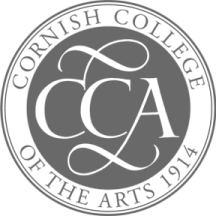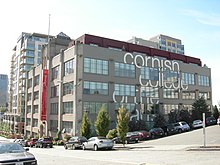
Mark George Tobey was an American painter. His densely structured compositions, inspired by Asian calligraphy, resemble Abstract expressionism, although the motives for his compositions differ philosophically from most Abstract Expressionist painters. His work was widely recognized throughout the United States and Europe. Along with Guy Anderson, Kenneth Callahan, Morris Graves, and William Cumming, Tobey was a founder of the Northwest School. Senior in age and experience, he had a strong influence on the others; friend and mentor, Tobey shared their interest in philosophy and Eastern religions. Similar to others of the Northwest School, Tobey was mostly self-taught after early studies at the Art Institute of Chicago. In 1921, Tobey founded the art department at The Cornish School in Seattle, Washington.

Seattle is a significant center for the painting, sculpture, textile and studio glass, alternative, urban art, lowbrow and performing arts. The century-old Seattle Symphony Orchestra is among the world's most recorded orchestras. The Seattle Opera and Pacific Northwest Ballet, are comparably distinguished. On at least two occasions, Seattle's local popular music scene has burst into the national and even international consciousness, first with a major contribution to garage rock in the mid-1960s, and later as the home of grunge rock in the early 1990s. The city has about twenty live theater venues, and Pioneer Square is one of the country's most prominent art gallery districts.

Buckingham Browne & Nichols School, often referred to as BB&N, is an independent co-educational day school in Cambridge, Massachusetts, educating students from pre-kindergarten through twelfth grade. The School has produced three of the 27 Presidential Scholars from Massachusetts since the inception of the program in 1964 and is a member of the G30 Schools group and the Round Square global education association.

Beatrice Whitney Straight was an American theatre, film and television actress and a member of the prominent Whitney family. She was an Academy Award and Tony Award winner as well as an Emmy Award nominee.

Nellie Centennial Cornish was a pianist, teacher, writer, and founder of the Cornish School in Seattle, Washington. She was influenced by the pedagogical ideas of Maria Montessori as well as Calvin Brainerd Cady's ideas about teaching broader values through music education. Martha Graham described her as "a small, round, plump little lady with the dynamism of a rocket." She founded the Cornish School in 1914 and served as the school's director for the next 25 years. Within three years it had enrolled over 600 students, and was the country's largest music school west of Chicago.

Adolph Rudolphovich Bolm was a Russian-born American ballet dancer and choreographer, of German descent.
As the new medium of cinema was beginning to replace theater as a source of large-scale spectacle, the Little Theatre Movement developed in the United States around 1912. The Little Theatre Movement served to provide experimental centers for the dramatic arts, free from the standard production mechanisms used in prominent commercial theaters. In several large cities, beginning with Chicago, Boston, Seattle, and Detroit, companies formed to produce more intimate, non-commercial, non-profit-centered, and reform-minded entertainments.

The ten-story Fine Arts Building, formerly known as the Studebaker Building, is located at 410 S Michigan Avenue across from Grant Park in Chicago in the Chicago Landmark Historic Michigan Boulevard District. It was built for the Studebaker company in 1884–1885 by Solon Spencer Beman, and extensively remodeled in 1898, when Beman removed the building's eighth (top) story and added three new stories. Studebaker constructed the building as a carriage sales and service operation with manufacturing on upper floors. The two granite columns at the main entrance, 3 feet 8 inches (1.12 m) in diameter and 12 feet 10 inches (3.91 m) high, were said to be the largest polished monolithic shafts in the country. The interior features Art Nouveau motifs and murals by artists such as Martha Susan Baker, Frederic Clay Bartlett, Oliver Dennett Grover, Frank Xavier Leyendecker, and Bertha Sophia Menzler-Peyton dating from the 1898 renovation. In the early 20th century, the Kalo Shop and Wilro Shop, firms owned by women and specializing in Arts and Crafts items, were established in the Fine Arts Building.
Elena Miramova was an American actress and playwright.

John Davidson Butler (1890–1976), was an American artist from Seattle, Washington. He worked primarily as a painter, but later also as a printmaker and ceramicist.

The Holyoke Building is a historic building located in downtown Seattle, Washington. It is a substantial five story brick structure with stone trimmings. Construction began at the corner of First Avenue and Spring Streets just before the Great Seattle fire of 1889. Completed in early 1890, it was among the first permanent buildings completed and ready for occupancy in downtown Seattle following the fire. Today the Holyoke Building is one of the very few such buildings still standing in Seattle outside of the Pioneer Square district and is a historic remnant of the northward expansion of Seattle's business district between the time of the great fire and the Yukon Gold Rush in 1897.
Nancy Skinner Nordhoff is an American philanthropist and environmentalist. Nordhoff's work is primarily focused in the Seattle and Langley, Washington regions, where she works to empower women, support rural communities and promote environmentalism of Washington's flora and fauna. In 2006, she was designated a Women's History Month Honoree by the National Women's History Project.
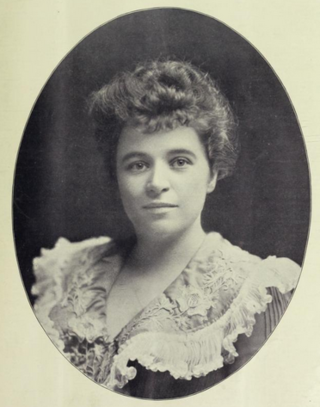
Maude Evelyn Ashton Fletcher Copp created a method for teaching children how to play the piano: the Fletcher Music Method.
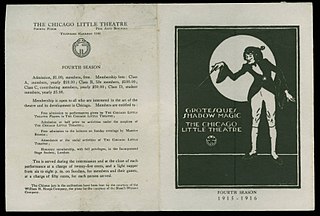
A theater company formed in 1912, the Chicago Little Theatre spearheaded and lent its name to a historic, popular wave in American Theater, the Little Theatre Movement. Founded in its namesake city by Ellen Van Volkenburg and Maurice Browne, the company was an art theater formed in opposition to the commercial values which held sway at the time. The company performed work by contemporary writers and Greek classics, as well as pioneering puppetry and puppet plays. Poetic dramas, restrained acting and new concepts in scenography were hallmarks of the Chicago Little Theatre.
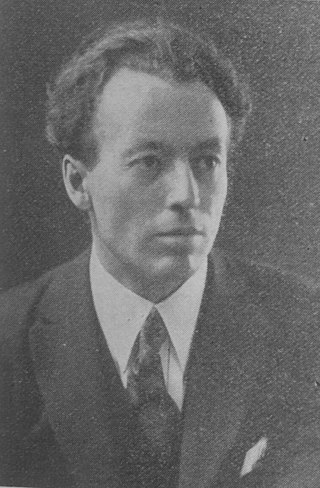
Maurice Browne was a man of the theatre in the United States and the United Kingdom. A poet, actor and theatre director, he has been credited, along with his then-wife Ellen Van Volkenburg, as the founder of the Little Theatre Movement in America through his work with the Chicago Little Theatre.
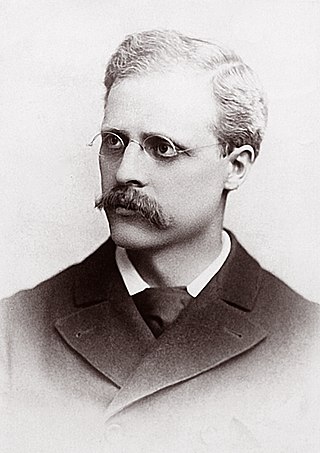
Calvin Brainerd Cady was an American musician, music teacher, leading educational philosopher and writer of the progressive era of education in his subject area.
Bonnie Bird was an American modern dancer and dance educator.
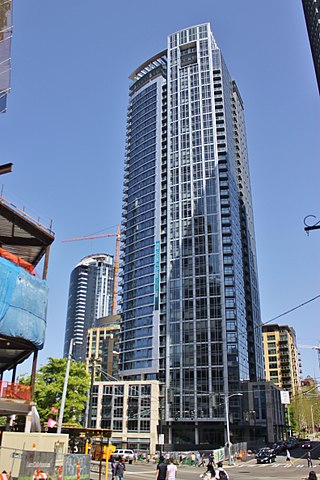
Stratus is a residential high-rise building in Seattle, Washington. The 43-story skyscraper, located in the Denny Triangle neighborhood, was completed in 2017, with 396 apartments and ground-floor retail space.
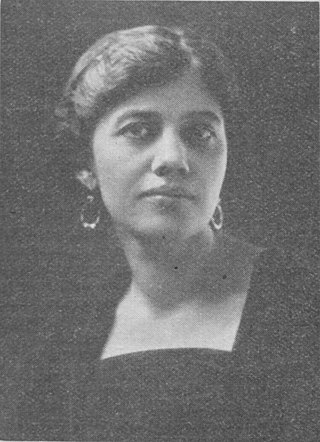
Ellen Van Volkenburg, born Nellie Van Volkenburg in Battle Creek, Michigan, was a leading actress, director, puppeteer and theater educator in the United States and the UK.
The Ladies Musical Club of Seattle (LMC), founded in 1891, is the oldest musical organization in Seattle, Washington. Although it began as a women's organization, it now also accepts men as full members. The LMC is a 501(c)(3) nonprofit.
